As an addendum to posting the first rough drafts of my town adventures system (such as it is), I though I might share a few thoughts on the design process, just in case that interests anyone else. For me it’s been a very interesting puzzle.
How do you go about simulating town-based adventures? For my part, since I’d already designed a whole system to simulate the narrative experience of a Dungeon-crawl, my first thought was “Well, I’ll just use the same mechanics as my Dungeon system, but reskin it so it feels like town”. But that quickly brought up questions like “isn’t there some deeper difference between dungeon-based adventures and town-based adventures?” Deeper than the mere surface details, that is. Don’t town adventures and dungeon adventures perhaps run according to different narrative structures?
At that point, the puzzle became very interesting to me.
But let’s back up a little, in order to approach this puzzle properly.
Here’s a big question for you: what kind of narrative structures are central to tabletop roleplaying? Let’s review a very short, simplified list of them, roughly in the order in which they became popular in RPGs:
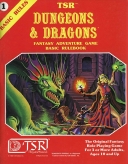 First we have the DUNGEON, in which you go from room to room, encountering a series of more or less discrete situations, hoping to gain things that will grant you ongoing benefits. In the millennia-long history of narrative structures, this is a ridiculously recent development – it was invented by D&D in the 1970s. (I hereby perform the obligatory nod to all the rest of those early ones: Tunnels and Trolls, Drakar och Demoner, etc etc. Yes, there were others. But D&D is obviously the central case).
First we have the DUNGEON, in which you go from room to room, encountering a series of more or less discrete situations, hoping to gain things that will grant you ongoing benefits. In the millennia-long history of narrative structures, this is a ridiculously recent development – it was invented by D&D in the 1970s. (I hereby perform the obligatory nod to all the rest of those early ones: Tunnels and Trolls, Drakar och Demoner, etc etc. Yes, there were others. But D&D is obviously the central case).
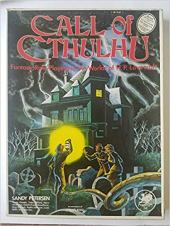 Second we have the MYSTERY, in which you are presented with a puzzle or question, and then try to find the answer to it by gathering a series of clues, leading up to a final revelation. Clearly, this narrative structure is much older than roleplaying – but it’s not as old as you might think. Mystery plots, in the modern sense, were first developed by late 19th century prose fiction, and then spread to theatre, radio, film, TV, etc. Early D&D (and similar) didn’t really make much use of them. It wasn’t until slightly later games that RPGs such as Call of Cthulu started to assume that the game’s central narrative structure would be the players’ search for clues, pursuit of leads, and so on. So that’s a second narrative structure.
Second we have the MYSTERY, in which you are presented with a puzzle or question, and then try to find the answer to it by gathering a series of clues, leading up to a final revelation. Clearly, this narrative structure is much older than roleplaying – but it’s not as old as you might think. Mystery plots, in the modern sense, were first developed by late 19th century prose fiction, and then spread to theatre, radio, film, TV, etc. Early D&D (and similar) didn’t really make much use of them. It wasn’t until slightly later games that RPGs such as Call of Cthulu started to assume that the game’s central narrative structure would be the players’ search for clues, pursuit of leads, and so on. So that’s a second narrative structure.
Third we have… well, it’s unclear. I’ve heard some people argue that those first two are really as far as the story has come (for example, I think I’ve heard The Alexandrian saying this kind of thing, though my memory could be playing tricks on me...) – and people who say this have a point, especially if you’re willing to set aside all those blundering sessions in which the players and GM kind of just futz about without really having any clear narrative structure at all. Certainly in my 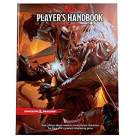 experience most successful RPGs seem to assume that the typical adventure follows either a Dungeon structure, or a Mystery structure, or both. (To take the central example, judging by the published adventures, modern D&D clearly assumes that you’re using a mix of the two).
experience most successful RPGs seem to assume that the typical adventure follows either a Dungeon structure, or a Mystery structure, or both. (To take the central example, judging by the published adventures, modern D&D clearly assumes that you’re using a mix of the two).
Having said that, there’s a case to be made that certain kinds of highly simulationist play tend to fall into a third kind of narrative structure – the narrative structure of a (supposedly) “realistic” thought experiment, in which the action proceeds according to the participants’ conception of “what would really happen next.” 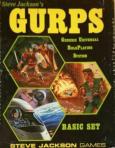 If that sort of thing interests you, then it can be tempting to dismiss all talk of narrative structures, and instead just declare “There are no rules of genre at work here, man! Here we just ask ‘What would really happen next?’, and do that!” I get the sense that GURPS once attracted many people who wanted (is it too harsh to say “thought they wanted”?) a style of play something like this – and certainly GURPS can do simulation really well. But really, unless you flip a lot of switches, the system as written is better at simulating relatively gritty heroic action, rather than cold hard reality – and gritty heroic action obeys its own rules of genre, which raises the question of narrative structure once again.
If that sort of thing interests you, then it can be tempting to dismiss all talk of narrative structures, and instead just declare “There are no rules of genre at work here, man! Here we just ask ‘What would really happen next?’, and do that!” I get the sense that GURPS once attracted many people who wanted (is it too harsh to say “thought they wanted”?) a style of play something like this – and certainly GURPS can do simulation really well. But really, unless you flip a lot of switches, the system as written is better at simulating relatively gritty heroic action, rather than cold hard reality – and gritty heroic action obeys its own rules of genre, which raises the question of narrative structure once again.
 Finally, there’s also a case to be made that certain games which emphasize interpersonal drama tend to run according to a different (and wider?) set of narrative structures, beyond just The Dungeon and The Mystery. One key example here would be the old Vampire: The Masquerade crowd from the 1990s (though, as many people observed at the time, the actual mechanics of that system seemed
Finally, there’s also a case to be made that certain games which emphasize interpersonal drama tend to run according to a different (and wider?) set of narrative structures, beyond just The Dungeon and The Mystery. One key example here would be the old Vampire: The Masquerade crowd from the 1990s (though, as many people observed at the time, the actual mechanics of that system seemed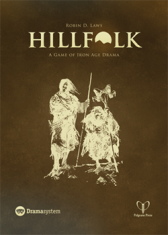 designed to support a different, more Mystery-like investigation narrative than the angst-ridden interpersonal dramas that in fact emerged. (Side note: here I’m just repeating what I’ve read others saying about the V:TM scene in the 1990s; it may be merely a caricature of the real scene; I wasn’t there. I’m interested to hear others’ views on this, if you were there…). Another example, from a much more recent “generation” of RPGs, would be Robin D. Laws’ “DramaSystem”, as exemplified by Hillfolk, in which the primary goal of the players is not to run through a dungeon or to solve a mystery, but to explore the dramatic conflicts between characters.
designed to support a different, more Mystery-like investigation narrative than the angst-ridden interpersonal dramas that in fact emerged. (Side note: here I’m just repeating what I’ve read others saying about the V:TM scene in the 1990s; it may be merely a caricature of the real scene; I wasn’t there. I’m interested to hear others’ views on this, if you were there…). Another example, from a much more recent “generation” of RPGs, would be Robin D. Laws’ “DramaSystem”, as exemplified by Hillfolk, in which the primary goal of the players is not to run through a dungeon or to solve a mystery, but to explore the dramatic conflicts between characters.
Right – so we have The Dungeon, The Mystery, and maybe some other narrative structures as well. What’s your point?
Well, I’m not yet 100% certain I have a point, but I may yet surprise myself.
At any rate, I was thinking about all of this as I was trying, in my own much smaller way, to design a good Town Adventures System. What are “town adventures,” anyway? Do they tend to run according to a typical narrative structure? What narrative structure would that be?
Well, in the first place it’s clear that some so-called “town adventures” are really just dungeons in disguise (the classic “Please clean the rats out of the tavern cellar!” and “Thanks! Now clean the bigger rats out of the town sewers!” adventures come to mind). But the more interesting “town adventures” would seem to be more than this. If their underlying narrative structure isn’t just “The Dungeon”, reskinned, then what is it?
The obvious candidate would be the Mystery – and you don’t have to look too far to find all sorts of published “town adventures” which are indeed classic mysteries of the “follow the trail of clues to catch the culprit!” kind. But I don’t think that really exhausts the case, because many interesting “town adventures” seem to follow a different set of narrative structures.
Ultimately, one thing that is distinctive about town adventures (which your prototype system, whatever its flaws, captures well) is variety. You can fight in the alleys and sneak into the palaces (see: Howard and Leiber), but there will be plenty of opportunities to bargain, do favors in exchange for help, plant evidence for a bit of blackmail, whip up an angry mob for backing or distraction…
I think looking for a single narrative structure for “town” adventures is probably a mistake, because an adventure in a town (just like an adventure in the country, or an adventure on a ship, or, for that matter, a fantasy adventure or a science fiction adventure) can follow any narrative structure depending on the protagonists goals and the forces opposing them. I think the general approach you have used- setting a goal, and then developing challenges which allow advance towards that goal when completed, with the precise details of how this advance happens being made up as needed- is as good an approach as can be expected.
[Also, it’s good to hear from you again.]
LikeLiked by 3 people
I would also point out the possibility of creating options to hook into other systems. Infiltration or simple burglary can be modeled using your dungeon crawl rules (I have done this myself with some success), to say nothing of the rather ahistorical but omnipresent sewers; a busy city is undeniably the best place to use the chase rules.
LikeLiked by 1 person
Looking at the games I run, which mostly have town adventures, I see a lot of “mystery” structure… but its not a conventional murder mystery, but more of investigating to learn some piece of information. This information is just as often about something that is going to happen as it is about something that will happen. I’ve heard claims that the difference between a mystery and a thriller is when they bad thing happens. Other times, the investigation is for a quest that isn’t time sensitive.
Other times, the players just want something and they’re given a number of obstacles to overcome
Another feature of our in-town play is random requests. These are quests, yes, but just as interesting as fulfilling them is reacting to them at all. My players generally have a laser-tight focus on whatever quest they are on, and so I have people approach them… they generally don’t have to go looking for these requests. These usually aren’t adventurous… they’re about leveraging their heroic power in some other way. Sometimes these requests rely on charity. Other times the requests are favors requested in exchange for doing something. And every so often these requests have ulterior motives.
So I suppose one major feature of town-play is that the world interacts with the players, rather than the other way around.
I hope these thoughts help!
And yeah, its awesome to see you again.
LikeLiked by 1 person
Happy to read you again!
After having run several years real time more than one group in a Metropole the difference I see compared to Dungeon or Wilderness adventures is that the character get sooner or later in the wheels of several factions, a game of houses so to say – and need to make their alliances to even get a chance at survival.
To not end in the gutters or have to flee the settlement they need mighty patrons or become patrons themselves – so networking is all and it is best, when you have contacts and friends from all walks of life.
Cheers
LikeLike
This blog is not dead? Oh yes ! I discovered it two years ago and used your adventures system and tables. I hope you continue to improve it, it’s already really good and could become a masterpiece once finished.
LikeLiked by 1 person
Take a look at what OSR/”post”-OSR is doing for some inspiration. Namely, necropraxis hazard die and possible Freebooters on the Frontier. I’ve brought some ideas from there and Ironsworn into a hack of a GURPS solo game but it is still very rough around the edges and not terribly “gurpsified” like your core material. I really appreciate your work and I bet you will hack it.
LikeLike
I check back here once in a great while– it is good to see you back. Hope you are getting back into GURPS blogging it. I’ve enjoyed your stuff!
LikeLike
It’s been a year- can we have an update on how you’re doing? I’m still having fun with your adventure generators.
LikeLike
Good to see the occasional post as it shows you still have time to devote to fun activities and life hasn’t gotten too much in the way.
I would say the main difference between the Dungeon and Town adventure is that in a town adventure you are generally expected to be operating in a cooperative sense with the inhabitants and in the dungeon you are expecting to be in conflict with the inhabitants.
If you are expecting to negotiate with the denizens of a dungeon then really it is a town and the people are just different. Conversely if the majority of towns inhabitants are opponents then you are really in a dungeon where the monsters are people.
The challenges in town adventures therefore tend to be less about combat as once combat starts the expectation is that the law will become involved and fighting them is undesirable on reputational grounds (even of they could be easily trounced). This tends to move them into the “mystery” genre, but really any non-combat genre would be fine.
Dungeons may also have a mystery aspect but the expectation is that combat may be necessary. If the equivalent of the local “law” turns up the expectation is that these are just another opponent to better in combat.
Town adventures usually allow the characters to use their “soft” skills extensively (or exclusively), dungeons allow them to use their combat skills extensively.
This is why traditionally you return to town after your dungeon adventure, it is safer and allows those whose combat skills have “uses”
Of course as you say there are sometimes dungeons in the town often of lower combat intensity and allowing a fairly rapid return to safety for novice adventurers (the sewer adventures or the robbery plots). Some large dungeons even have towns to allow recuperation and refit (communities of deep gnomes etc.).
I think that is why COC is predominantly mystery with many soft skills like bargain, fast talk, spot hidden etc. and combat is lethal (as was Traveller for example). D&D was predominantly dungeon and at least originally had no skill system other than a combat one it was decades before the equivalent of the “spot hidden” check essential to mystery was added. Traditional D&D town adventures tended to basically be dungeon in a town and towns were purely for resupply and recovery (see classic Keep on the Borderlands).
Proper town adventures also tend to be slower burn, requiring a long term investment in time and resources. Dungeon adventures tend to be short and punchy providing a one off return for a one off activity (kill the monster, take its treasure) even if the return itself is part of a longer term goal.
For this reason some players really fail in town adventures as they don’t tend to think in the longer term. Those players are the ones that will enter your beautifully realised town with complex interactions and immediately try to rob the bank and get themselves incarcerated (and then expect to be able to treat the prison like a dungeon).
LikeLike